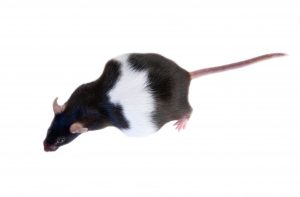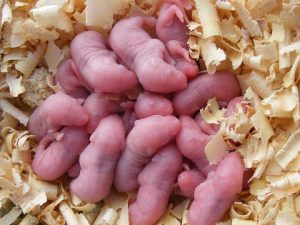
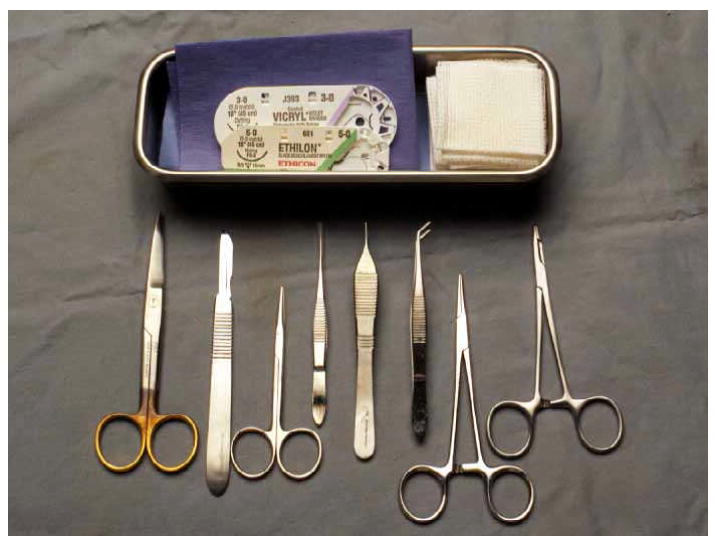
Proper Perioperative Procedures in Rodents Promote Faster Recovery
Operative procedures for lab animals are highly regulated by a multitude of institutions and guidelines. The Office of Laboratory Animal Welfare (OLAW) Public Health Service (PHS) Policy and the U.S. Department of Agriculture’s (USDA) Animal Welfare Act and Regulations, are the two principal federal documents that set forth requirements for animal care and use by institutions using animals in research, testing, and education.
Those documents state that any procedures that may cause more than momentary or discomfort, distress or slight pain to the animals will be performed with appropriate sedatives and/or analgesics and will involve consultation with the attending veterinarian. The personnel conducting those procedures also have to be accurately trained and qualified to perform those techniques, such as handling, immobilization, anesthesia, tranquilization and euthanasia. While a variety of training programs are available, hands-on practice is essential.
Adequate pre and post procedural care should be taken by PIs, scientists, technicians, vets and all other personal. However, a study from Washington University (1) showed that lapses do occur, often due to the personnel being overextended: they are unsure of the rules that are always changing, fail to recognize the seriousness and consequences of violations, do not provide adequate training to their animal care staff, or do not hold regular meetings with their research team.
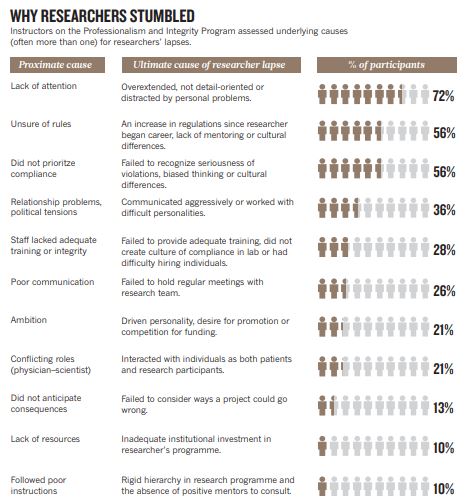
We summarize below some of the important perioperative care techniques, to help promote humane care of animals, improve skill levels of technicians, and support good science.
Use aseptic techniques
The living conditions of laboratory animals can bring a lot of contaminants to the surgical table (bedding, feces, etc…). With rodents, performing survival surgeries is rendered even more challenging as the procedure is usually done by only one person, who must do all the tasks alone, i.e. preparation, anesthesia, procedure, and clean up (2).
- Keep the surgical area clean, organized and uncluttered, away from high traffic, and within closed doors to avoid disturbance and contamination by dust and air turbulence.
- Instruments must be up to date (3) (sharp, no rust…etc) and sterilized (autoclave, ethylene oxide, glutaraldehyde solutions, heat sterilizers…)
- Minimize the transfer of microorganisms from personal to animal by using the proper personal equipment (glove, gown, mask, drapes….)
- Surgical preparation includes shaving of the hair (away from the surgical area to prevent contamination with hair) and disinfection of the surgical site.
Avoid Pain and Distress
- Anesthetics
Inhalant gas or injectable anesthetics such as ketamine and tribromethanol are widely used in rodent surgeries. However, anesthesia-induced hypothermia is the most frequent complication in small animal surgery, and can have deleterious effects, including decrease blood pressure, heart rate, and respiration rate and impair coagulation. The good thing is that it is also the most preventable post procedure complications, just by providing a source of heat during the preoperative, intraoperative, and postoperative periods.
- Antibiotics
If a nonsterile part of an animal, such as the gastrointestinal tract, is to be surgically exposed or if a procedure is likely to cause immunosuppression, preoperative antibiotics may be appropriate. However, the routine use of antibiotics should never be considered a replacement for proper aseptic surgical techniques.
- Analgesics
The Guide for the Care and Use of Laboratory Animals states “Preemptive analgesia (the administration of preoperative and intraoperative analgesia) enhances intraoperative patient stability and optimizes postoperative care and well-being by reducing postoperative pain”. A combination of NSAIDs (Carprofen 5 mg/kg, Meloxicam 5 mg/kg) and opioids (buprenorphine 0.1 mg/kg) can be used according to the table below. Follow your institutions requirements, for some examples, look at UBC, UPenn, or UTSA.
Oral delivery of analgesics or antibiotics has been proven to be effective while reducing stress on the animals. See our articles on medication delivery , using MediGel Sucralose, MediGel Hazelnut or MediDrop Sucralose.
|
Pain severity |
Examples | Drug | Duration |
|
Mild |
Ear biopsy, tail tip , blood collection |
NSAID |
once |
|
Moderate |
Subcutaneous surgeries (skin incision/biopsies), non invasive Craniotomy, Gonadectomies or Embryo transfers |
Either NSAID or opioid |
Preop + 1 day postop |
|
Severe |
mouth and teeth surgeries, Joint/bone surgery, Laparotomy, Thoracotomy |
Both NSAID and opioid |
Preop + 3 days postop |
Help wound healing
Dehiscence, or wound separation, is a surgical complication where the edges of a wound no longer meet. This can have multiple causes:
- Technical issues due to closure material, sutures which can slip, stretch, cut through tissue
- Mechanical stress due to tension and swelling at the incision site.
- Disruptive healing at the local site due to lack of blood supply, infection, size of wound. Other systemic factors play a role in healing, such as co-morbidities (obesity, immunosuppression), medication or malnutrition
Nutrition is a critical factor in the wound healing process, protein intake being essential to successful healing. Indeed, some proteins such as collagen and elastin play a structural role. During the proliferative phase of wound repair, collagen deposition is crucial to increase the wound’s tensile strength. Vitamin C is required for collagen synthesis and is thus linked to wound healing, while Vitamin A plays an integral role in the inflammatory phase of wound healing.
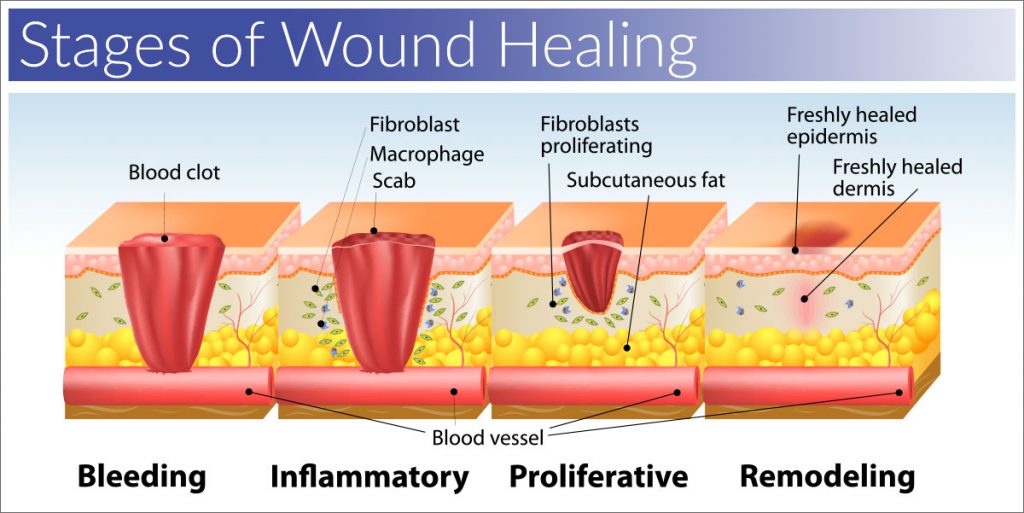
Image from What are the stages of Wound Healing? by Biodermis here
Provide Proper nutrition
Diet and good hydration are the most important factors in recovery after surgery. Nutritional deficiencies can impede the normal recovery process and reduce the chances for an optimal recovery (4). A 3% reduction in weight represents a humane cut-off (5). Good post-surgical nutrition is vital for replenishing and strengthening the body and can support complete recovery in several ways (6):
- Speeds wound healing by helping to repair skin, nerves, blood vessels, muscle and bone. Protein especially is needed to repair tissue, slow muscle catabolism and decrease the inflammatory phase (7)
- Improves immunity by providing the raw materials it needs to protect against infection
- Helps to replace any blood loss
- Increases your level of energy
A study by The Jackson Laboratory on 8-week-old ovariectomized C57BL/6J females concluded that mice gained more weight and were healthier when given DietGel Recovery or DietGel 76A for post surgical care compared to water and diet only.
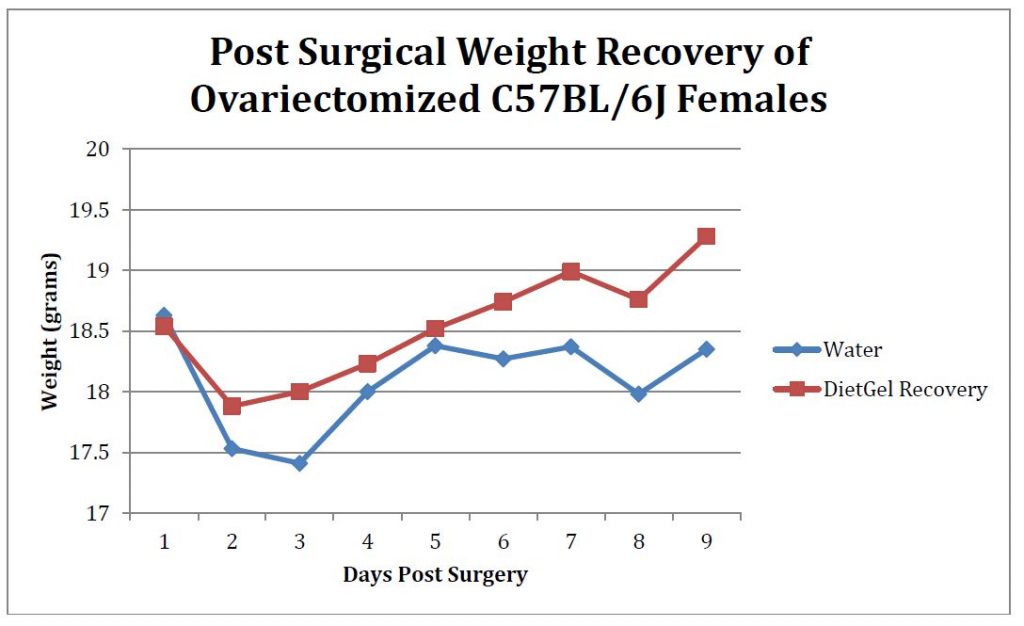
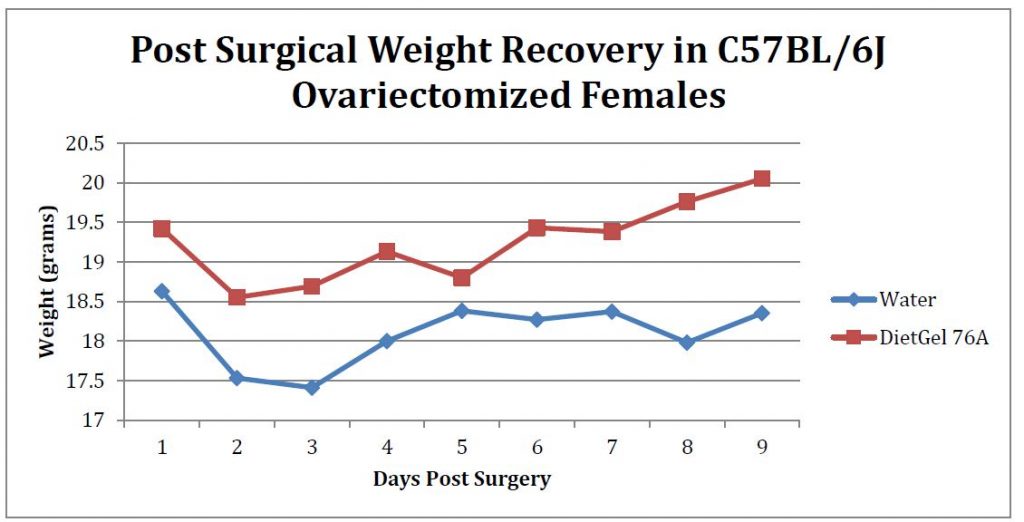
It is thus highly recommended to provide nutritional supplements such as DietGel®76A, DietGel®31M or DietGel® Boost postoperatively, as well as maintain good hydration with supplements such as HydroGelTM or DietGel®
For samples, click here
Inspired by AALAS webinar of February 27, 2020 “Proper Perioperative Procedures: Do They Really Matter?” – Dr. Jennifer Davis.
01/29/2020: How to Manage Barbering Behavior in Breeding Colonies
03/04/2020: Proper Perioperative Procedures in Rodents Promote Faster Recovery
03/30/2020: The Importance of Gut Microbiota in Reproducibility and Translatability in Research
06/01/2020: Pain is a Variable that Affects Data Reproducibility
07/14/2020: Understanding the Grimace Scale as a Pain Assessment for Laboratory Animals
References
(1) Misconduct: Lessons from researcher rehab – James M. DuBois et al. – Nature Comment 2016
(2) Techniques in aseptic rodents surgery – Shelley L. Hoogstraten-Miller and Patricia A. Brown – Curr Protoc Immunol. 2008 Aug
(3) Identifying and Combatting Surgical Instrument Misuse and Abuse – Karin Lillis – 2015
(4) Preoperative nutrition and the elective surgical patient: why, how and what? – C. Gillis1 and P. E. Wischmeyer – Anaesthesia 2019
(5) Correlation between body weight changes and postoperative pain in rats treated with meloxicam or buprenorphine – Matthew P. Brennan et al. – Lab Anim (NY). 2009 Mar
(6) ESPEN guideline: Clinical nutrition in surgery – Arved Weimann et al. – Clinical Nutrition 2017 Feb
(7) Nutrition, Anabolism, and the Wound Healing Process: An Overview – Robert H. Demling, MD – Eplasty. 2009

